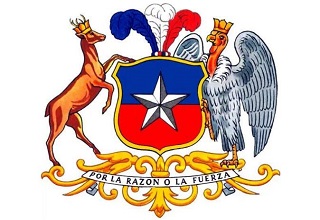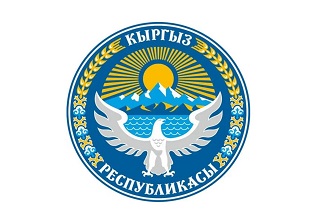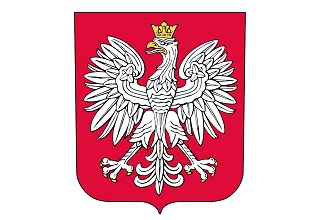Regarding the Inspection and Quarantine Requirements for the Beef of Uruguay
1. Basis for Inspection and Quarantine
1.1 Legal and Regulatory Basis:
The "Food Safety Law of the People's Republic of China" and its implementing regulations.
The "Entry and Exit Animal and Plant Quarantine Law of the People's Republic of China" and its implementing regulations.
The "Import and Export Commodity Inspection Law of the People's Republic of China" and its implementing regulations.
The "Special Provisions of the State Council on Strengthening the Supervision and Management of the Safety of Food and Other Products."
The "Regulations on the Administration of Food Safety for Imported and Exported Foods" and the "Regulations on the Management of Overseas Production Enterprises of Imported Foods" of the People's Republic of China.
1.2 Bilateral Protocol:
The "Protocol on Inspection, Quarantine, and Veterinary Health Requirements for Beef Imported from Uruguay to China" between the General Administration of Customs of the People's Republic of China and the Ministry of Livestock, Agriculture, and Fisheries of the Eastern Republic of Uruguay (hereinafter referred to as the "Protocol").
2. Permitted Imported Products
Permitted beef imports include frozen and chilled, boneless and bone-in edible beef. Edible beef refers to skeletal muscles from cattle that have been slaughtered and bled, with hair, viscera, head, tail, and limbs (below the wrist and joints) removed, excluding throat, tongue, minced meat, offcuts, mechanically separated meat, and other by-products.
Permitted edible bovine by-products include: frozen bovine cartilage (excluding throat cartilage), frozen diaphragm, frozen unrefined edible beef fat (only body fat, excluding visceral fat), frozen heart, liver, kidney, stomach, pizzle, testicles, heart tubes, arteries, tail, tendons and shank meat, bone marrow, and bones.
3. Production Enterprise Requirements
Beef production enterprises exporting to China (including slaughter, cutting, processing, and storage enterprises) should be located in foot-and-mouth disease-free zones recognized by the World Organisation for Animal Health (WOAH), under the official supervision of Uruguay, and comply with the relevant veterinary and public health regulations of both parties.
Production enterprises exporting beef to China must be registered with the General Administration of Customs of the People's Republic of China (hereinafter referred to as the Chinese side). Only products produced after the date of registration are eligible for export to China. Unregistered beef production enterprises are not permitted to export to China.
4. Inspection and quarantine requirements
4.1 Management of animal epidemic diseases.
4.1.1 Uruguay is free of bovine infectious pleuropneumonia (bovine pulmonary disease), bovine spongiform encephalopathy, bovine nodular skin disease, peste petit ruminant and rinderpest.
4.1.2 Uruguay implements bovine spongiform encephalopathy surveillance and feed ban in accordance with WOAH requirements, and establishes an effective traceability system.
4.1.3 Uruguay is a WOAH immune-free country against foot-and-mouth disease.
4.2 The conditions to be met by live cattle used for the production of beef exported to China.
4.2.1 Born, raised and slaughtered in Uruguay, with a unique identification that can be traced back to the farm where they were born and raised.
4.2.2 from a farm that has not introduced any even-toed ungulates from a country or region other than Uruguay in at least the last 12 months before slaughter.
4.2.3 From farms that have not been infected with bluetongue, tuberculosis, parattuberculosis, rabies, anthrax, Q fever, brucellosis (abortive form), and Trypanosoma izi (including Sula disease) in the past 12 months prior to slaughter.
4.2.4 From premises that have not been subject to quarantine restrictions or surveillance in the last 6 months prior to slaughter due to the occurrence of other notifiable cattle diseases under the Animal Health Regulations of China, Uruguay and WOAH.
4.2.5 Animals were reared at the last farm for at least 46 days before slaughter. During this period, according to Uruguay's foot-and-mouth disease surveillance system, these farms had a sufficient number of unvaccinated "sentinel animals" (calves aged 6-12 months) for the epidemiological monitoring of foot-and-mouth disease in cattle samples used for the production of beef exported to China, and the results were qualified.
4.2.6 Animals have not been vaccinated with live anthrax vaccine at least 14 days before slaughter.
4.2.7 Never fed feed containing ruminant meat and bone meal and oil residue.
4.3 Processing requirements.
4.3.1 Live cattle for the production of beef exported to China:
4.3.1.1 Have never used veterinary drugs and feed additives prohibited by both parties.
4.3.1.2 Slaughtering, processing and storage of enterprises registered in China.
4.3.1.3 from farms that comply with the provisions of the Protocol.
4.3.1.4 In the process of transport to the slaughterhouse and in the slaughterhouse, no contact with cattle that do not comply with the provisions of the Protocol, cattle and other animals that are not registered in China.
4.3.1.5 In accordance with the relevant laws and regulations of China and Uruguay, the cattle used for the production of beef exported to China were inspected before and after slaughter, and the results were qualified. It was proved that all slaughtered cattle were healthy, without any clinical symptoms of infectious and parasitic diseases, without pathological changes in the carcasses and organs, and the major lymph and glandular tissues on the carcasses had been removed.
4.3.2 The carcass of cattle shall be pre-cooled and matured at a temperature above 2 ° C for at least 24 hours after slaughter and before division, and the central temperature of the muscle shall not exceed 7 ° C and the central temperature of the internal organs or by-products shall not exceed 3 ° C during the corresponding time. One by one, the pH of the central longissimus dorsi muscle of the carcass was below 6.0.
4.3.3 Implement the Uruguay National Residue Control Plan to certify that the residues of veterinary drugs, pesticides, heavy metals, environmental pollutants and other toxic and harmful substances in the products do not exceed the maximum residue limits (MRLs) of China and Uruguay.
4.3.4 The product is not contaminated by pathogenic microorganisms and meets the requirements stipulated by the laws of China and Uruguay.
4.3.5 It shall not be processed with other types of animal products, products that do not comply with the provisions of the Protocol, and products of non-registered enterprises.
4.3.6 During the period of major public health epidemics, enterprises shall carry out epidemic prevention and control in accordance with relevant international standards, formulate necessary meat safety prevention and control measures, and ensure that meat is effectively prevented from cross-contamination during the whole process of raw material reception, processing, packaging, storage, transportation and other prevention and control measures.
4.3.7 The product is hygienic, safe and suitable for human consumption.
4.3.8 Edible cattle by-products imported into China shall also meet other processing hygiene requirements under the Protocol.
4.4 Storage requirements.
In the frozen or cold storage of beef, there should be a special area for storing beef exported to China and clearly marked.
5. Certificate requirements
Each container of beef exported to China shall be accompanied by at least one original veterinary health certificate certifying that the products comply with the veterinary and public health laws and regulations of China and Uruguay and the relevant provisions of the Protocol.
Veterinary health certificates are written or printed in Chinese, Spanish and English (English is required when completing the certificate). The form and content of the veterinary health certificate shall be approved by both parties in advance.
The Directorate-General of Livestock Services (DGSG) of the Ministry of Livestock, Agriculture and Fisheries of Uruguay shall provide the quarantine seal impression, veterinary health certificate sample, list of authorized veterinarians and corresponding signature, anti-counterfeiting identification, certificate electronic information email name and other information to the Chinese side for the record (if applicable). If the electronic information of the certificate is sent, it shall be sent to the Chinese Customs through the designated channel of the Chinese side within 48 hours after the certificate is issued. Any change or alteration shall be notified to the Chinese side at least one month in advance.
The DGSG shall send electronic information on the issued veterinary health certificates to the Chinese side in a timely manner through official channels for verification by the Chinese side at the time of import, and the DGSG shall ensure that the electronic information is accurate and secure.
6. Packaging, storage, transportation and marking requirements
Beef exported to China must be packaged with new materials that meet the national food safety standards of China, Uruguay and international health standards. Beef exported to China shall have a separate inner package, on which the name of the product, the country of origin, the registration number of the production enterprise and the production batch number shall be marked in both Chinese and English or Chinese and Spanish. The product name, country of origin, product specifications, origin (specific to state/province/city), production enterprise registration number, production batch number, destination (destination shall be marked as the People's Republic of China), production date (year/month/day), warranty period, storage temperature and other contents shall be marked in both Chinese and English or Chinese and Spanish. Apply (paste or print) official inspection and quarantine marks. Prepackaged meat products should also meet the requirements of China's laws, regulations and standards on prepackaged food labeling.
Chilled vacuum packaged beef exported to China (whether or not air-conditioned packaging) shall comply with China's national food safety standards and Uruguay's packaging hygiene standards. Exporters shall confirm the warranty period and clearly mark it on the packaging. The shelf life of chilled and vacuum-packed beef exported to China shall not exceed 120 days. The shelf life of chilled fresh non-vacuum packaged beef exported to China shall not exceed 14 days.
Beef exported to China from packaging, storage to transportation should meet the relevant health requirements of China and Uruguay to prevent contamination by pathogenic microorganisms or toxic and harmful substances. The storage and transportation of beef should be carried out under the corresponding temperature conditions, the central temperature of frozen beef should be maintained at -15 ° C, and the central temperature of cold fresh beef should be between 0 ° C and 4 ° C.
After the cargo is loaded into the container (by sea or air), it is sealed under the supervision of the Uruguayan authorities and the seal number must be indicated in the veterinary health certificate. Do not open and change the packaging during transportation.
It is hereby announced.
GACC
Dec. 25, 2023




